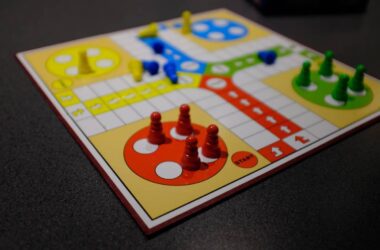In this Guide,
- System Requirements for MuMu Player
- Where to Download MuMu Player for Windows
- How to Install MuMu Player on Windows (Step-by-Step)
- Switching MuMu to English (If Default is Chinese)
- Initial Setup and Configuration
- Common Installation Issues and How to Fix Them
- Frequently Asked Questions [FAQs]
- Wrapping up: What are You Playing Today?
If you’re looking for a smooth and lightweight Android emulator that doesn’t drain your PC’s performance, MuMu Player might just be the right fit. Built by NetEase for gamers and Android users alike, it’s designed to handle mobile apps and high-performance games without the bloat you often get with bulkier emulators.
Whether you’re testing new apps or trying to play titles like Genshin Impact or Free Fire with better controls, knowing how to download MuMu Player for Windows is the first step. The process is simple, but there are a few things to get right, especially if you’re trying to avoid default language barriers or ensure the installation goes smoothly on a low-spec system.
This guide will walk you through everything from system requirements and official download sources to step-by-step installation and post-setup configuration. Let’s start by making sure your PC is ready to run MuMu Player efficiently.
Also Read: Best Settings for MoMo App Player on Low-End PCs
System Requirements for MuMu Player
Before you rush to download MuMu Player for Windows, it’s worth checking if your system can actually run it well. While MuMu is known for being more lightweight than other emulators like BlueStacks or Nox, it still needs a decent baseline to avoid lag or crashes.
Minimum Requirements (Just to Run)
- OS: Windows 7, 8, 10, or 11 (64-bit recommended)
- Processor: Intel or AMD dual-core CPU
- RAM: 2 GB minimum
- Graphics: Integrated GPU (Intel HD Graphics 4000 or newer)
- Disk Space: At least 3 GB of free space
- Virtualization (VT-x/AMD-V): Must be enabled in BIOS
These specs will launch the emulator, but gameplay and app responsiveness might be limited.
Recommended Specs (For Smooth Use)
- Processor: Intel i3/i5/i7 or AMD Ryzen 3/5
- RAM: 4 GB or more
- Graphics: Dedicated GPU (NVIDIA or AMD preferred)
- Disk Space: SSD for faster load times and responsiveness
MuMu is surprisingly efficient even on mid-range setups, which makes it a go-to choice for gamers on older PCs. Once you’re sure your hardware is up to the task, the next step is knowing where to get a clean, safe version of the installer.
Also Read: How to Download & Install Momo Emulator on Windows
Where to Download MuMu Player for Windows
To ensure you’re getting the safest and most up-to-date version of MuMu Player, it’s best to download it directly from the official website. NetEase, the developer behind MuMu, regularly updates the emulator with performance improvements, Android version upgrades, and new features for gamers.
Avoid third-party sites or unofficial mirrors, as they may host outdated installers or versions bundled with unwanted software. The official source is reliable, fast, and optimized for all modern Windows versions.
Here’s the official download link and what to expect:
| Download | One-Click |
|---|---|
| License Type | Download Now |
| Operating System | Windows, Mac |
How to Install MuMu Player on Windows (Step-by-Step)
Once you download MuMu Player for Windows, installing it is straightforward. The setup process is fast and doesn’t require technical skills, but there are a few screens you’ll want to read carefully to avoid missing key options.
Step-by-Step Installation Guide
- Run the Installer: Locate the .exe file you downloaded (usually named something like MuMuInstaller.exe) and double-click to launch it.
- Choose Your Installation Folder: The installer will suggest a default location, but you can click “Customize” to choose another drive, useful if your C: drive is low on space.
- Click “Install Now”: This begins the installation. It usually takes under 2 minutes on most systems.
- Allow Firewall or Network Permissions: Windows may prompt you to allow the app to communicate through your firewall. Click “Allow” so the emulator can connect online.
- Launch MuMu Player: Once installed, the launcher opens automatically. You’ll see the Android home screen or an initial setup prompt.
That’s it, you’re in. The emulator is now ready to configure and use, though it might default to Chinese the first time, depending on your regional settings.
Also Read: 8 Best Android Emulators For Windows PC
Switching MuMu to English (If Default is Chinese)
Depending on your region or installer version, the first time you launch MuMu, the interface might open in Chinese. Don’t worry, switching to English is simple and takes less than a minute.
Here’s how to do it:
- Launch MuMu Player and wait for the home screen to load.
- You’ll see icons like a browser, file manager, and settings, just like on an Android phone.
- Click on the Gear Icon.
- This is the Settings app, the same one you’d find on any Android device.
- Scroll down to the section with an ‘A’ icon or the word 语言和输入法 (Language & Input).
- Tap on it.
- Tap the top option, which is likely the current language.
- A list of available languages will appear.
- Select English and confirm.
- The interface should immediately switch.
Once you’ve done this, navigating the emulator becomes much easier, especially if you’re setting it up for the first time after you download MuMu Player for Windows.
Initial Setup and Configuration
Now that your MuMu Player is installed and set to English, it’s time to personalize the experience. The emulator offers plenty of control from resolution to keyboard mapping, so you can tailor it to your PC’s performance and how you plan to use it.
Adjust Resolution and DPI
- Click the gear icon on the MuMu title bar (not the Android settings app).
- Go to the Display or Settings tab.
- Set resolution to 1280×720 for balance, or 1920×1080 if your PC can handle it.
- DPI can be kept at 240 for sharp visuals or lowered to 160 for better speed.
Set Up Keyboard Mapping
- Launch any game inside the emulator.
- Tap the keyboard icon on the side toolbar.
- Drag and assign keys to movement and action buttons.
- Save your layout when done.
- You can create profiles for different games.
Log in to Google Play Store
- Open the Play Store from the home screen.
- Log in using your Google account.
- Once done, you can install apps and games like on any Android phone.
These steps are key if you’re planning to use MuMu regularly, whether for gaming, social apps, or development testing. They ensure that after you download MuMu Player for Windows, your experience isn’t just functional but fully optimized.
Also Read: The Best GBA Emulators for PC: Windows and Mac
Common Installation Issues and How to Fix Them
Even though MuMu Player is lightweight and stable, you might hit a few bumps during or after installation. Most of these are easy to fix and don’t require advanced troubleshooting.
Installer Won’t Launch
If nothing happens after you double-click the installer:
- Right-click the file → Run as Administrator
- Make sure Windows Defender or antivirus isn’t blocking it
Also, confirm that the file was downloaded completely. If the .exe is under 2 MB, it likely didn’t finish.
Black Screen After Launch
This usually means your graphics driver is outdated or Virtualization (VT-x/AMD-V) is disabled:
- Update your GPU drivers from Intel, NVIDIA, or AMD’s official sites
- Reboot into BIOS and enable virtualization
Emulator Freezes on First Boot
Try restarting your PC and running MuMu again. If the freeze continues:
- Reinstall the emulator
- Choose a different installation folder
- Temporarily disable any overlays (like Discord or graphics tuning apps)
These fixes resolve most issues for users who download MuMu Player for Windows and run into trouble on low-end or older PCs. If the problems persist, MuMu’s official site also has a lightweight “Lite” version for basic systems.
Also Read: How to Install Skyrim Mods Manually | Vortex / Nexus Mod Software | PC, PS4, Xbox
Frequently Asked Questions [FAQs]
Yes, MuMu Player is completely free and doesn’t charge for downloads, updates, or features.
Yes, the latest version of MuMu Player comes with Android 12 support by default.
Absolutely. MuMu runs smoothly on Windows 11, just like it does on older versions like Windows 10 and 8.
Yes. Enabling virtualization in BIOS helps MuMu perform better and prevents lags or crashes.
MuMu works well with integrated graphics, though reducing resolution can help with performance.
It depends on your PC. MuMu is lighter and great for mid to low-end systems.
Yes, MuMu supports both and offers keyboard mapping for better control.
Yes, developers often use MuMu to test APKs, run app builds, and debug Android interfaces.
Before You Leave
Get Our Prime Content Delivered to your Inbox for Free!! Join the Ever-Growing Community… Right Now.
Give this article a quick share,
Wrapping up: What are You Playing Today?
Whether you’re a gamer looking for smoother controls or a developer testing Android builds, MuMu Player offers a fast and flexible way to bring mobile apps to your PC. It’s lightweight, beginner-friendly, and optimized for performance, even on older systems.
In this guide, we walked through everything you need to download MuMu Player for Windows safely, install it without issues, and configure it for the best experience. From switching the interface language to mapping game controls, you’re now ready to get started confidently.
Explore more emulator guides to fine-tune your setup or troubleshoot common issues and enjoy a smoother, more powerful Android experience right from your desktop.
If you like what you read, give us a quick share on your social media platform and give us all the love and support. You can also connect with us on our Telegram Channel, Facebook Page, Reddit Community, and X to never miss out on tech updates.







